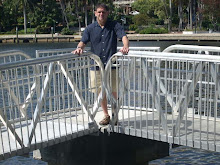Factoid Friday

Next Thursday (9/23) is the official start of the fall season however, it seems like fall right now. So, today I give you "factoids" about fall.
• Trees take water from the ground through their roots & take carbon dioxide from the air. They also use the energy from sunlight to produce sugar which together is called photosynthesis.
• Because of its wide verity of trees, the Eastern United States, especially the North Eastern U.S., is one of the best places in the world for viewing fall colors.
• Bright red & purple colors come from anthocyanin (an-thuh-'si-uh-nuhn) pigments, like in maple leaves, are formed from trapped glucose.

• Brown colors come from a waste product called tannin, orange colors comes from carotene ('kar-uh-teen) & the yellows from xanthophyll ('zan-thuh-fil)
• The leave colors red, yellow & brown are in the leaves all year long & only become exposed when the green chlorophyll disappears in the fall.
• Mulching fall leaves where they fall lets them decompose so that they can release their minerals back to the underlying soil.
• Maples, Oaks, Elms, Birch & Ash trees are just a few of the trees that give spectacular colors during the Autumn season.
• Fall colors are best when late summer is dry & autumn has bright sunny days & cool nights below 40 °F.
• Fall days become shorter & many plants stop making food. That is when the green chlorophyll starts to disappear from the leaves.
• Most leaves fall from trees because the ends of the branch are sealed off near the leaf stem to protect the tree through the long winter months.
• Composting fall leaves is an excellent way to improve yard & garden soils. Mixing green & brown materials together is the basic rule.

• An acre of trees can grow 4,000 pounds of wood in a year, using 5,880 pounds of carbon dioxide & giving off 4,280 pounds of oxygen in the process.


0 Comments:
Post a Comment
Subscribe to Post Comments [Atom]
<< Home